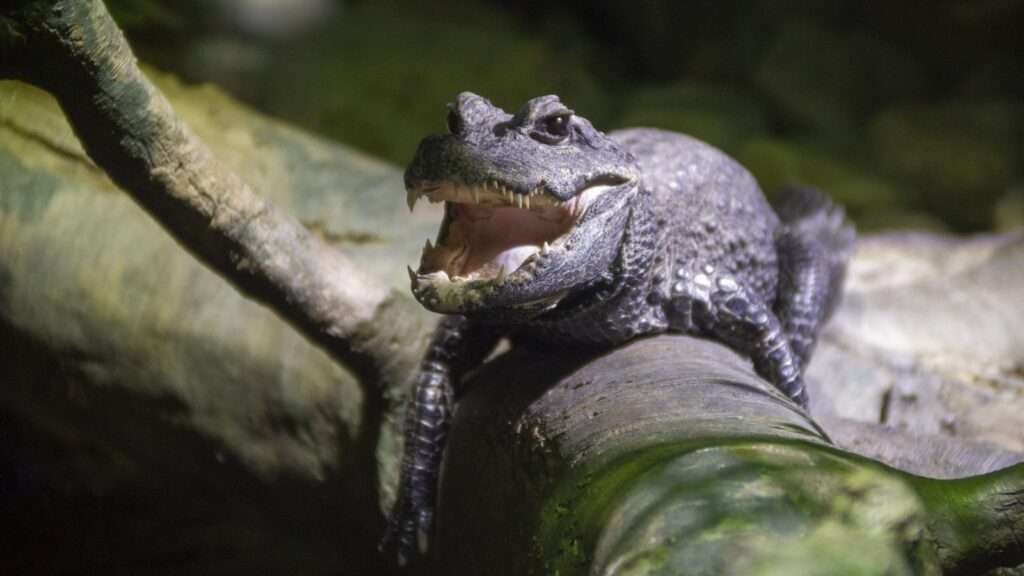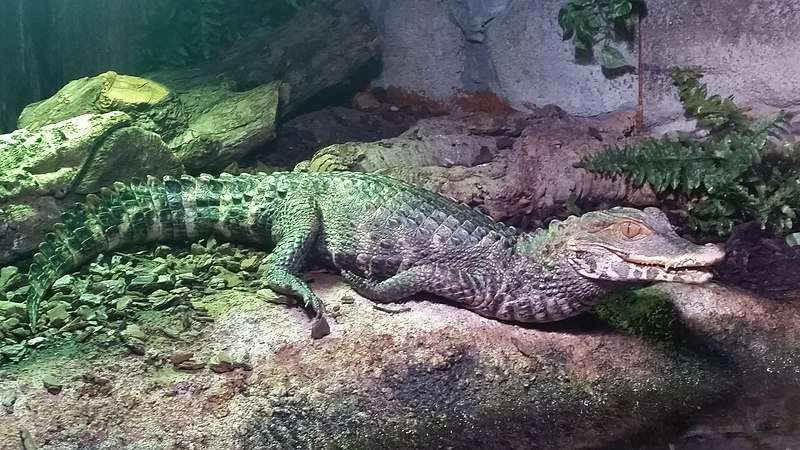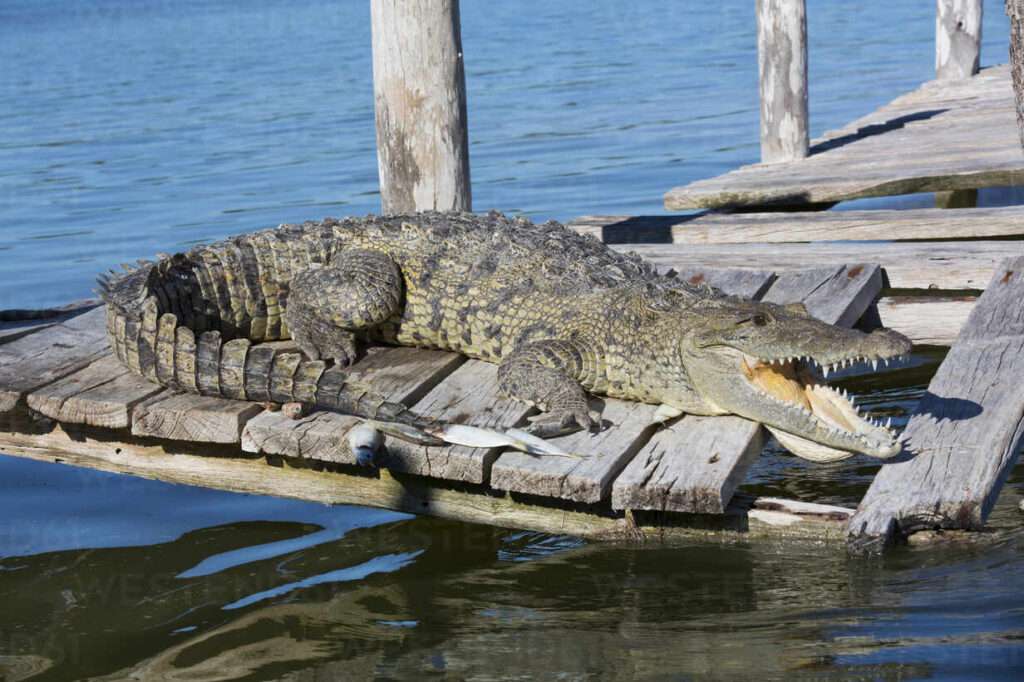
Description:
Scientific name: Osteolaemus tetraspis
Life span: 50-100 years
The dwarf crocodile (Osteolaemus tetraspis), which is an African crocodile and the smallest extant (living) species of crocodile, is also known as the African dwarf crocodile, broad-snouted crocodile (a name more frequently used for the Asian mugger crocodile), or bony crocodile.
The dwarf crocodile is a very small crocodile with a short, blunt mouth and a black body, with yellow undersides. Bony plates that compose the animal’s skin’s rough, armored scales cover the body. These scales shield the crocodile from harm and prevent it from burning while it is exposed to the sun. The crocodile can see and breathe while underwater because its eyes and nostrils are still visible above the water’s surface.

Native Region/Habitat
An African reptile is the dwarf crocodile. The territory of its distribution reaches as far south as northern Angola from sub-Saharan areas to west-central Africa, from southern Senegal to the Democratic Republic of the Congo. Rainforests are the dwarf crocodile’s natural environment. The reptile lives in swamps with thick vegetation, slow-moving currents, and rivers in tropical lowland areas.
Behavior:
It is nighttime for this reptile. The dwarf crocodile is a lone hunter who pounces at night on small animals in or near water. The crocodiles sleep during the day in burrows that are typically dug along riverbanks, have long, several-meter-long entrance and exit tunnels, and are situated there. The crocodiles hang into the water and live among submerged tree roots when it is difficult to locate a good place to burrow. The crocodile must constantly maintain its body temperature because it is a cold-blooded species. The reptile takes a sunbath to warm up when the temperature is low. The animal enters the water to cool off during the heat. When in water, crocodiles often set up an ambush: their bodies are submerged, but their eyes and nose are above the water’s surface, enabling the reptile to hide from predators and launch an unexpected assault when prey materializes.
Care As a pet/In captivity:
Given the unique character of African dwarf crocodiles, it is strongly advised against keeping one as a pet. They are wild animals by nature and ought to be allowed to exist in the wild. However, because of habitat degradation and the ongoing threat of poaching, their diminishing number has to be safeguarded. By opposing unlawful hunting and making a donation to the sanctuaries that work to safeguard these lovely animals, you can always lend a helping hand. Another option is to work as a zoo volunteer.
Table





